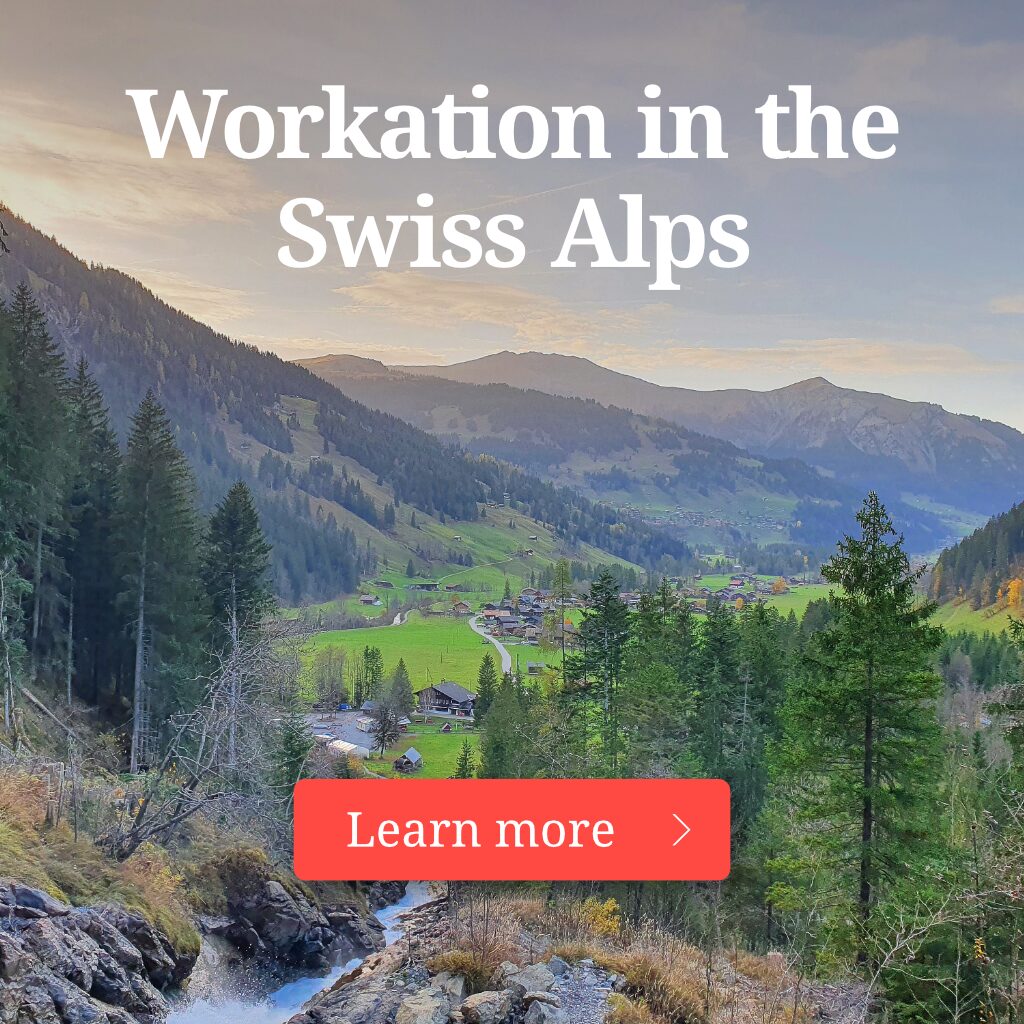|
|
This article explores the main elements of remote work policies being implemented by companies around the world and examines them from the perspective of destinations looking to attract and meet the needs of remote employees wanting to take a Workation.
Is Remote Work Still on the Rise? (Spoiler – Yes!)
While most of the remote news headlines today focus on controversial return-to-office policies, it is not true that remote work is on the decline. According to the 2024 Owl Labs State of Hybrid Work survey, full-time in-office workers decreased by 6% between 2023 and 2024. In 2024, around 27% of US workers were hybrid, with another 11% fully remote.
Flexible working is still one of the main perks that companies can use to attract the most desirable talent. What flexibility looks like can vary from offering “work from anywhere” policies, like Airbnb, which allows their workers to work from anywhere with some tax-related restrictions on how long they can stay in any one country that is not their home country. However, other companies are taking different approaches, offering a mix of in-office and work-from-home days negotiated on a case-by-case basis and perks like extended Workations when agreed with managers.
Employees are also more likely to take advantage of these opportunities as the philosophy of “making the most of your full compensation” is on the rise (just ask TikTok). Employers are also encouraging talent to consider their options to boost satisfaction and productivity.
For travel destinations, Workationers is a growing market. It also adds significant value as Workationers are likely to stay longer and can be attracted to destinations and fill vacancies during low seasons. According to the same Owl Labs survey, 58% of hybrid workers took some kind of Workation, where they worked away from their primary office base, in the last year.
For destinations looking to attract and leverage the Workation market, it is important to understand how company Workation policies work and adapt their offering accordingly. This makes it easier to attract Workationers and makes it easy for their employers to approve their Workation requests.
Of course, not all Workationers are the same. Freelancers, entrepreneurs, and digital nomads also make up a proportion of the market – you can read our breakdown of the Workation market segment here. But they tend to have similar needs to remote employees, therefore ticking boxes for remote employees will help meet the needs of other parts of the segment too.
Remote Work Policies: What Do They Contain?
As already stated, different companies take different approaches to remote work policies, but most policies will include variations of the same core principles. (Read our full guide to remote work policies here.) From the perspective of destinations, the key policy clauses to consider are restrictions on how long and where people can travel.
Many companies will place caps on how long their employees can be away, or how long they can stay in any one country to avoid tax risks. There are tax risks for the employee, who may become a resident for tax purposes if they stay in one country for 183 days. But there are also tax risks for the company, which can have a new country deemed a “permanent establishment” and become liable for local corporate taxes if their employees stay for more than three months. This is why Airbnb limits their employees to staying only 90 days in any country.
Airbnb also limits where their employees can work, though it is an extensive list of 170 countries. This too can be to cover liability, as employers can be held responsible if something happened to their employee while working abroad. Therefore, high-risk nations and countries that may be in conflict are often off limits.
Remote work policies will also contain detailed instructions about issues such as security and data protection, ensuring that remote employees do not put the company’s sensitive data or compliance at risk.
Less relevant to destinations, remote work policies will also be clear on who can work remotely, who is responsible for providing different resources, how communications will be managed, work expectations and requirements, and so forth. This is where there tends to be more variation between companies as it depends on what they do and how they work.
Working With Remote Work Policies: Considerations for Destinations
Hubs has several years of experience working with destinations to attract the Workation market segment and provide Workation-friendly services. Based on that experience we know that destinations that want to optimize their attraction to and engagement with Workationers can respond to some of the key elements of remote working policies principally by responding to the following three considerations.
Consideration 1: Length of Stay and Available Visas
When developing a Workation offer, the first thing that destinations need to consider is how long Workationers are likely to stay. This depends in part on the type of Workation they are taking and in part on the visas available where you are.
People traveling on a Workation tend to stay longer than standard vacationers as they intend to spend their time differently. Rather than spending all their time relaxing and taking in the sights, they need to dedicate a fair amount of time to work and build the vacation side of their time around that. But exactly how long they will consider staying will depend on a number of factors.
People who work from a particular location most of the time – whether that be an office or home – and are taking a one-off Workation tend to stay for between one and three months. This tends to be an appealing travel window for those looking for a temporary change of scenery. This also aligns with most standard tourist visas, which are capped at 90 days. While remote workers shouldn’t technically work remotely from another country on a tourist visa, many do, and as long as they aren’t earning locally, it is not something that most governments are concerned about policing.
If the country that the destination is based in offers a digital nomad visa, some people may choose to stay for longer to truly immerse themselves in the local culture. These visas can also allow them to negotiate special permission from their employer based on the conditions of that visa. Therefore, it is worth considering whether there is a digital nomad visa available for the destination and how long it allows foreign workers to stay. Most digital nomad visas are issued for one year in the first instance with minimum salary requirements, and they are often renewable for at least another year. Workation destinations can also support people when applying for their visas, as it often requires showing proof of accommodation to qualify.
However, it is worth bearing in mind that on top of this, some remote work policies will put a cap on how long an employee can stay in one place, usually at 180 days. This is because, in most cases, once a person stays in one place for 183 days they become a resident for tax purposes. Therefore, companies will often block that to avoid the tax headache. Some digital nomads who move around more-or-less continuously will also use that as a limit to maintain their desired tax status.
So, in theory, a Workationer could be interested in staying for anything from one month to one year. Many Workation destinations have found it beneficial to offer a three-month “Workation season,” targeted to make the most of accommodation during low season. They will offer a competitive rate for the first month, as Workationers do not want to feel like they are paying an excessive amount for somewhere to work. They will then offer discounts for the second and third months for those who choose to stay longer. This tends to appeal to most people booking a Workation, and anyone who wants to stay longer can negotiate with the destination depending on how long they intend to stay and how busy that time of year is likely to be.
Consideration 2: Tax Regulations and Outpost Status
One of the biggest headaches for companies when allowing their employees to work overseas is navigating tax regulations. Destinations can help employees make the case for their Workation by providing guidance on tax rules and double taxation agreements as part of their service. But this only deals with the employee side of the equation, what about the employer side and the risk of inadvertently establishing a “permanent establishment?”
The most common trigger for a permanent establishment that causes tax liability is if the employee is doing business locally, which usually means making sales or signing contracts. However, just using the same location as a place of business for an extended period can trigger the same, with the specific rules varying by country. This generally becomes a concern when a worker is in one place for more than three months.
Destinations can help alleviate this threat by offering coworking spaces. While coworking spaces can be considered permanent establishments for businesses that use them regularly, this is less likely to be the case because the company does not have “control” over the space, therefore diminishing the connection. Providing proper coworking spaces and providing information about local regulations regarding permanent establishments can be an important way to attract Workationers.
Working Spaces
Providing access to working spaces and coworking spaces is essential for the comfort and productivity of Workationers and can help companies avoid tax liability. But workspaces also must be fit for purpose. Companies need to be sure that local security – both physical security and cybersecurity – meets their minimum requirements.
It can be highly beneficial for destinations to demonstrate that their working and coworking spaces meet security standards. There are a few key elements to achieving this.
- Locations need to be physically secure with access limited to authorized persons, and trackable in case of any security breaches. This means secure access, security cameras, and individualized access based on a security pass or individual security code.
- Workers must be able to work securely within the space, which means that there should be access to fully private working areas for sensitive activities, and there should be secure places to store valuable items and equipment. There should also be password-protected printing and copying services and a shred-all policy for any unclaimed papers.
- Cybersecurity is by far the greatest threat, especially on a shared Wi-Fi network. Coworking spaces can combat this by having password-protected Wi-Fi that uses a captive portal, firewall, dedicated secure network, network segmentation for different members and businesses as required, and encrypted data transmission.
- Coworking spaces should also invest in cyber insurance to cover the cost of any security breaches should they occur.
By implementing these security measures and having clear documentation available about them, destinations can make it easier for employees to be productive and employers to authorize a Workation to your destination.
Final Thoughts
When developing any kind of product for any kind of audience, it is important to know what the market needs and take steps to meet those needs. Targeting the Workation market is no exception, though many destinations are behind the curve as they do not focus on the unique needs of Workationers. They are meeting the “vacation” side of their trip needs but leaving travelers to figure out the “work” side.
Destinations that want to stand out and attract Workationers should focus on what the traveler needs, but also on what their employer allows and requires. These requirements, usually stipulated in a remote work policy, can make the difference between a Workation trip to your destination being authorized or denied. This can help destinations grow their market quickly, as recommended word-of-mouth is currently how Workation destinations are attracting most of their new clients.









